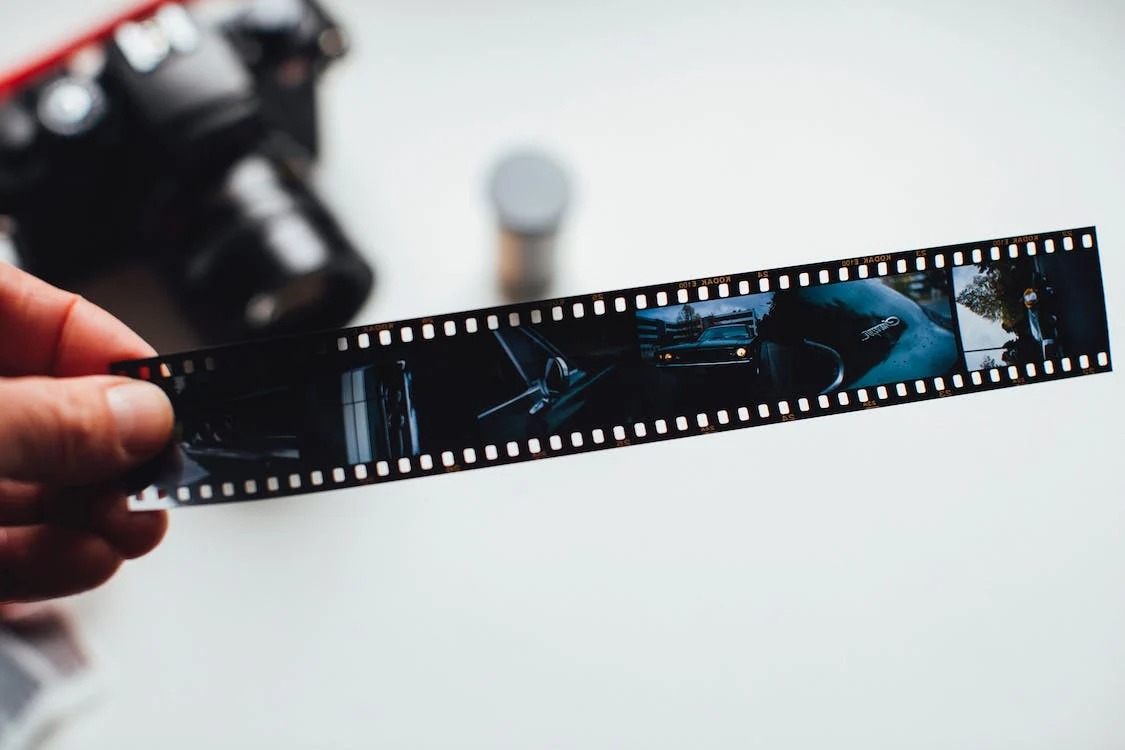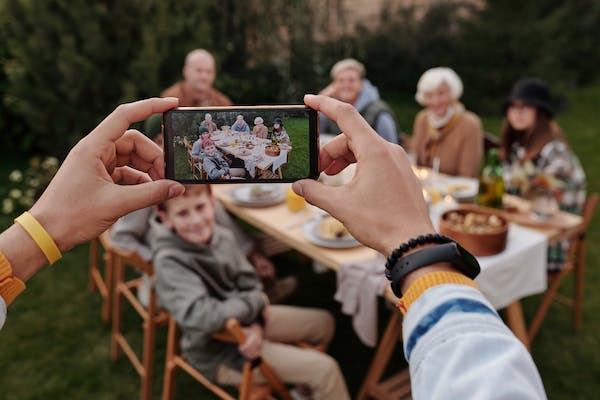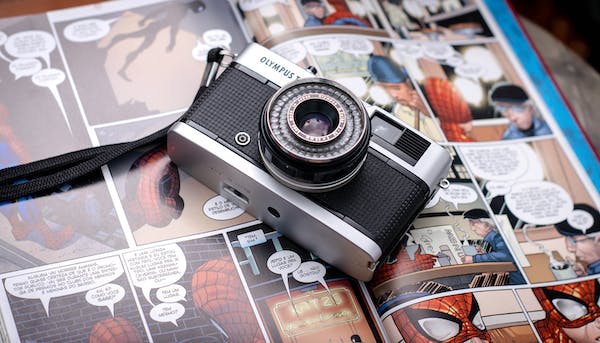Visual memory is much more than images that remind us of past events. They are our main tools to remember the past and predict the future. Our emotions, our physical wellbeing and our identity as human beings are also visual memories. Today you can read a lot. Read as much as you can here, here, here, here, here, here, here, here, here, here, and here.
What is visual memory
Visual memory refers to the brain’s ability to store and retrieve visual information. It is a crucial aspect of human cognition and perception. When we see something, our brain processes and encodes the visual input, forming a memory representation. Visual memories allow us to recall and recognize images, objects, colors, and spatial arrangements. It plays a significant role in various activities, including reading, navigation, and facial recognition. Visual memory can be short-term, such as remembering a phone number briefly, or long-term, enabling us to recall vivid details of past experiences. It is essential for learning, problem-solving, and maintaining a coherent understanding of the world around us.
If you are ready to dive deep into the world of memory, check out my memory masterclass . It’s packed with advanced techniques that’ll transform how you remember everything. You can enjoy significant savings! Simply reach out to [email protected] to inquire about our special discounted rates. Your satisfaction is guaranteed!
The skill out of comics
Visualization when properly applied is a super skill. Superior memory, greater awareness of the environment, nerves of steel – all of these can be generated via simple memory visual techniques. Ancient societies used this, and ancient elites used the skill to rule.
You would not expect an advanced mnemonic device in 15th century Congo, any more than you would expect an analog computer in ancient Greece. And yet these devices existed. How cool is that? A mnemonic device from an African kingdom similar to the Wakanda of the comics. Lucasa memory board:
Hearing what you see
To tell you the truth, there is no such thing as visual memory per se. There are several interconnected perceptual skills, and we can only approximately feel the boundaries. Synesthesia is the situation when these boundaries disappear.
Did you ever wonder how blind people read? They relocate some of their brain processing power to the senses of touch and hearing. What we see they hear and what we hear they feel, or something like that. This is actually scientifically proven in experiments with blindfolding and sensory deprivation.
When a healthy person uses multiple senses at the same time, the effect can be amazing. Musicians often get the texture of their music as a sort of touch and the emotional context as color. This is something that is acquired, not even by focused learning.
For situational awareness, we can learn to translate motion into sound. This is military-grade tech, so I will not go into details.
Mathematicians can sometimes hear music when solving their equations. I do not know how it feels. Never happened to me.
Taking photos ruins the soul
Well, this is a clear exaggeration of something scientifically measured. When we take many photos, we enjoy the occasion less and do not remember it as well.
I am not talking about the zero photos policy since I actually love photography. Something like 5-8 sessions of 5-8 pictures on a trip per day is more than enough for me. I walk around with my camera on me, experiencing everything. Then I take several focused pictures from various perspectives and free my mind. I do not even review the photos on the location: I do it between events.
Photography takes a huge part of our processing power. “Photographer’s eye” means that we always look for good angles. Then when we take photos we creatively consider different combinations. When we review the photos, we are again not there to enjoy the experience. If we are not careful, our focus is not fully in the experience and not fully in photography.
At the same time, by taking photos we give our brain permission to forget. This is the last thing I would want in a meaningful experience. I would prefer a flashbulb memory: to be fully there and remember forever every small aspect of what I feel.
By the way, if we do not need to communicate with people, actually do or feel anything, taking pictures improves the experience and lets us remember the smaller details of what we see longer.
Comics can be incredibly emotional
We may doodle during conversations and remember the stuff in the meeting rooms better. Maybe we can use comics for effective visualization to remember stuff. If we practice NLP, we can use comics to change our own wellbeing.
So now we become very good at comics that work for us. What else can we do with this tool?
Studies show that comics are great in describing emotional states to other people. This is a bit surprising because we tend to treat our doodling as deeply personal ways to process things. We treat comic books as action-packed sequences. Yet, the same comics can convey feelings much better and faster than other media, and the language is pretty universal.
At the same time, this should not surprise us as we are very good at reading faces and body language of people with all cultural backgrounds. In fact, there is even a special area in our brain that specializes in recognizing faces. Chess champions use it to recognize different positions on the board. Musicians use it to recognize patterns. We can use it for all sorts of things with some practice.
Sherlock Holmes and mental palaces
Recently I had a conversation (a podcast really) with my friend and colleague Anthony Mathivier. Anthony is my personal go-to guy for all questions that deal with mental palaces. In the discussion, it was clear that we both do not like the way comics, or in this case TV series, depict Sherlock Holme’s mental palaces. Only I focused on the positive things that come from this depiction.
Comics characters are lousy role figures. They are deeply disturbed, and if they were real people, they would probably lack basic survival skills. Their methods are flawed. No logical sequence can justify some of their most creative solutions. They fight against overwhelming odds. And they are always successful. Real-life people, unless very careful, usually fail and are deeply miserable.
If any real person would try something like that, the results would be disastrous. Sometimes we can get a glimpse of it observing people who use drugs or suffer from mania depression. Yet, comics heros or real-life villains in their mania show us the ways the human mind and body can overcome their limitations. They teach us to ask the right questions and generate motivation to fuel our long and exhausting search.
Inattentional blindness
Magicians, especially mentalists, are the real-life comics heroes. They orchestrate a simple series of events that guide our attention away from what is really happening. They are manipulating our visual memory to connect things that do not happen in reality. Sometimes, simply watching the same events on a slow-motion camera we notice the tricks used by the magicians. Other times even other magicians do not understand the tricks.
Magicians are capable of using more dimensions than most of us. If there is a stage, a magician will go under the stage. When there are two boxes, a magician will be able to stack two people in a way they will look like one. A magician will use a ring with a hole and carefully cover the hole with his hand. Once we learn the trick, the technical part of it is actually very boring. We understand that what we see is not real, yet our eyes see and want to believe what they see.
This inattentional blindness is very dangerous for our learning and creativity. We often fail to notice events, possibilities, and facts that disagree with our perception of reality. From our filter bubble, various events reinforce each other, while an innocent child can easily find a solution. I would love to say that “out-of-the-box” thinking could be taught, yet I was never able to teach myself. All I could do was go from a small box to a much larger one. Maybe that’s not so bad?
Does knowledge matter?
US students fail in general knowledge tests. Is it so bad? Knowledge can often be replaced by keyword searches and reliance on expertise of others. No human can possibly know as much as a dedicated computer.
Yet, our knowledge defines the box in which we think and dream, the box of what we imagine as doable and dare to do. If we do not know that other alternatives exist and how they work, we live in a very small box.
Here comics may help. The hyperloop project of Elon Musk is not more than elaborate comics. Something plausible to common sense was presented by a great mentalist, and thousands of people started to build it. Not because there were some new ideas, or because there were working prototypes, but because a real-life comics hero had it in his vision.
Real knowledge matters for experts in the narrow area of their expertise. True visionaries go beyond knowledge. They think what the next step of knowledge would be and then wait for the others to catch up.
In god we trust
Nothing can promise the validity of our visual memory. Science shows that it can be easily manipulated. Yet we trust it. Not because we should trust it, but because we need an anchor to build our theories.
A huge part of the economics is built around the risk-free rates, assuming that the USA will never default on its bonds. Personally, I think we will see such an event in our lifetime.
Descartes assumed that if he can ask a question, he probably exists, and so should other things. Guess what: a computer simulation would be able to ask questions perfectly well. In fact, we could as well be computer simulations.
One of my friends is religious. He told me that in religious questions he trusts an old wise man because he never was wrong in his lifetime. A year afterward the old man was diagnosed with dementia.
Our real knowledge could as well be derived from comics. When we recall the same thing over and over, our visual memory changes just a bit. If nobody guides this process, the memory will not change much. When the process is guided, we can change our perception entirely. Something dreadful and menacing can become a beacon of hope. Christianity was built on bloody remains of its saints.
Real-life comics heroes
I firmly believe that some people influence our collective memories. They are real-life comics heroes. We do not see them as real people, but they change the way we think. Some of them are not even real people but figments of imagination.
At the same time, many people have amazing skills. These skills do not look supernatural to them. They feel that they are real and honest and multidimensional. Some of these skills can be taught to anyone who desires to learn them. Yet once we learn these skills, they lose some of their magic appeals.
Yet others fill our imagination with visual memories of the things to come. These things are not real, but once enough people believe they are possible, they may well become reality.
How to improve visual memory
Improving visual memory can be a valuable skill that enhances various aspects of life. Here are some techniques to help boost your visual memory abilities:
- Pay attention: Actively engage with the visual information you encounter, focusing on details and patterns.
- Visualization exercises: Practice visualizing images, scenes, and objects in your mind, creating vivid mental representations.
- Association technique: Connect visual information with something familiar to enhance recall. Create mental links between new and existing memories.
- Mnemonic devices: Use visual cues, such as acronyms or mental images, to remember information or sequences.
- Chunking: Break down complex visual information into smaller, manageable parts to facilitate memorization.
- Mindfulness techniques: Cultivate present-moment awareness to enhance focus and retention of visual details.
- Spatial memory exercises: Engage in activities like puzzles, mazes, or spatial awareness games to improve your ability to remember visual layouts.
- Multisensory learning: Combine visual stimuli with other sensory inputs, such as touch or sound, to create stronger memory associations.
- Regular practice: Dedicate time to regularly exercise your visual memory test, challenging yourself with progressively more difficult tasks.
- Use technology: Utilize visual memory training apps or online programs specifically designed to improve visual memory skills.
Frequently Asked Question
What is visual memory and examples?
Visual memory refers to the ability to store and recall visual information. It allows us to remember images, shapes, colors, and spatial details. Examples include recalling a friend’s face, recognizing familiar objects, remembering a scenic landscape, or visualizing a map’s layout. Visual memory plays a crucial role in learning, problem-solving, and daily tasks.
How strong is visual memory?
Visual memory refers to the ability to remember and recall visual information. Not all visual information is equal. Some remember their personal activities, while others remember graphs and flowcharts or art pieces. In fact people often think they have aphantasia simply because they try to tap into the kind of visual memory they are less skilled with. For example, I cannot visualize properly any of the places I actually visited or people I know, but I can visualize with great detail scenes from video games and movies.
Visual memory also varies in strength among individuals, with some possessing exceptional visual memory while others struggle to retain visual details. The strength of visual memory depends on various factors, including genetics, training, and cognitive abilities. And to be honest, diet and sleep are also critical. Techniques such as visualization, mnemonic devices, and repetition can enhance visual memory. However, it’s important to note that visual working memory is just one aspect of overall memory, and individuals (for example: visually impaired) may have vary strengths in different types of memory, such as auditory or olfactory.
What does poor visual memory mean?
Poor visual memory refers to a cognitive condition characterized by difficulties in retaining and recalling visual information. Individuals with poor visual memory may struggle to remember and recognize images, faces, colors, or spatial arrangements. They may have trouble visualizing and mentally manipulating objects in their mind’s eye. This can impact various aspects of daily life, such as learning, problem-solving, navigating, and remembering visual details. Poor visual memory can be caused by neurological conditions, developmental disorders, brain injuries, or simply individual differences in cognitive abilities. Strategies like repetition, association, and visual aids may be helpful in compensating for poor visual memory and improving overall functioning. And yet in our memory courses we opt for a complementary approach of dual coding and synesthesia, relying on multiple senses for more profound effect.
Difference between Visual Long-Term Memory and Visual short-term Memory
Visual Long-Term Memory (VLTM) and Visual Short-Term Memory (VSTM) are two distinct cognitive processes related to visual information processing. VLTM refers to the ability to store and retrieve visual information over extended periods, while VSTM involves the temporary storage and manipulation of visual information for immediate tasks. Short-term or eidetic memory is closely connected with speedreading and situational awareness, while long term memory can be used with mnemonic devices.
How To Enhance Visual Memory
Enhancing various kinds of visual memory can benefit various aspects of life. This means using exercises from diverse disciplines, particularly suited for specific kinds of visual memory. You can engage in regular visualization exercises, such as mentally picturing detailed scenes or objects, to strengthen your mind’s ability to retain visual information. You can even train visualization in a meditative state, like a mandala. Yet this is not a must.
For short-term visual memory quite often simply practicing speedreading is often good enough: you can read with emphasis on graphs and flowcharts, with emphasis on accuracy and numbers or with emphasis on visual flow and eidetic memory.
For long-term memory practice association by linking new information to familiar images, creating vivid mental connections. Utilize mnemonic techniques, like creating visual stories or using acronyms, to aid in remembering complex information. Incorporate visual aids, such as diagrams or mind maps, when studying or organizing ideas to reinforce visual memory. As you progress you can use more complex mnemonic devices. Memory landscapes are usually more challenging and more rewarding, enabling visualization and memorization of literally millions of details.
Finally, maintain a healthy lifestyle with adequate sleep, proper nutrition, and regular exercise, as they contribute to optimal brain function and memory retention. A hint: if something like Omega 3 is missing in your diet, you can use food supplements and nootropics.

Get 4 Free Sample Chapters of the Key To Study Book
Get access to advanced training, and a selection of free apps to train your reading speed and visual memory



